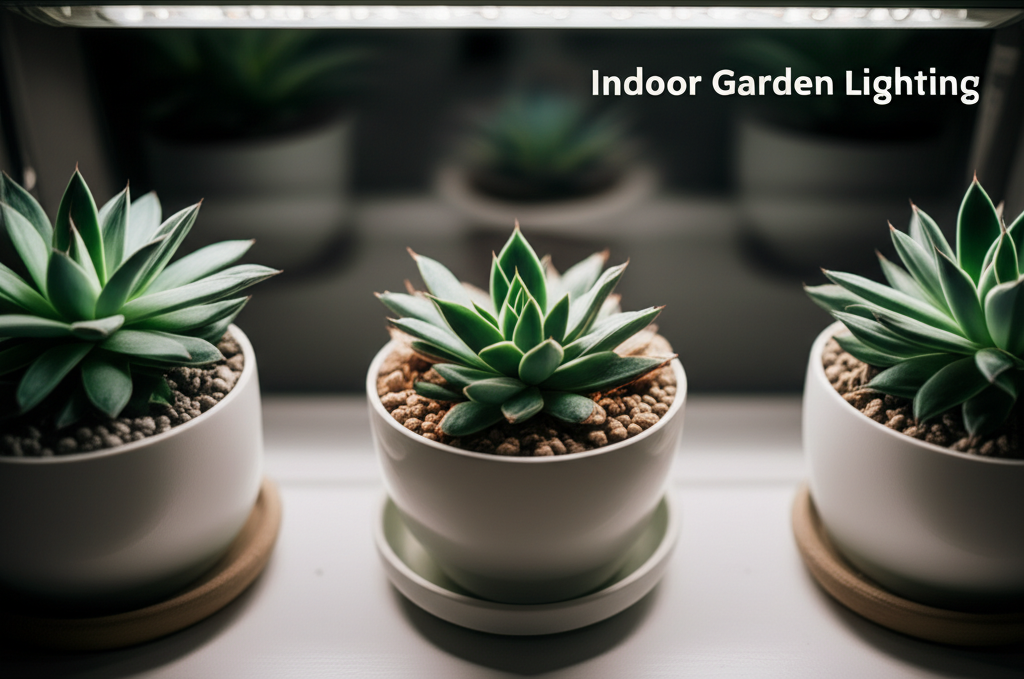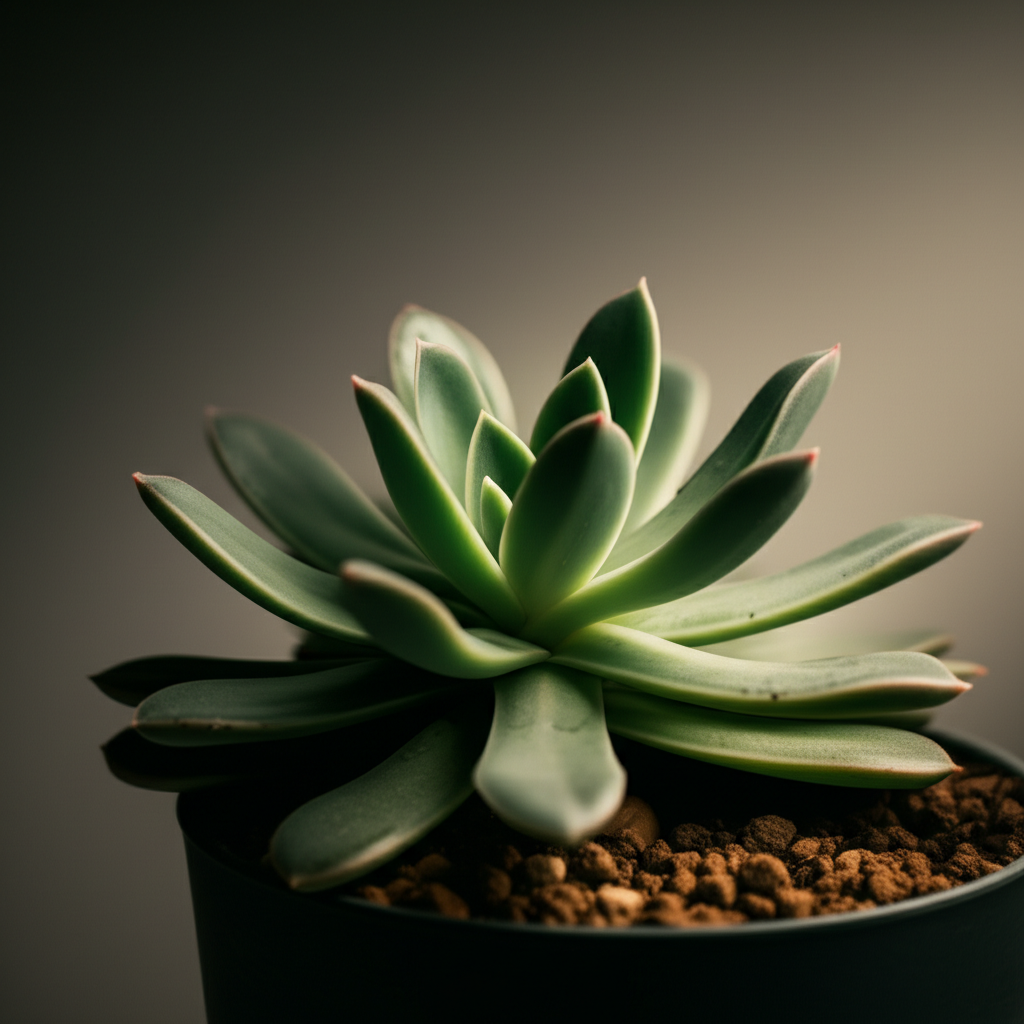The Allure of the Ice Plant Succulent
Ice plants, belonging to the Aizoaceae family, are a diverse group of succulents renowned for their unique, glistening epidermal cells. These specialized cells, often filled with water, refract light, giving the plant a dewy, frosted appearance – hence the name “ice plant.” While many ice plant species thrive outdoors in arid climates, several varieties have become popular choices for indoor succulent gardens, bringing a touch of otherworldly beauty to homes and apartments. Their striking appearance, coupled with their relatively low-maintenance needs, makes them an attractive option for both novice and experienced plant enthusiasts. However, like all succulents, optimal indoor growth hinges significantly on providing adequate lighting. This guide will delve into the crucial aspects of lighting for your ice plant succulent, ensuring your indoor garden flourishes.
Understanding Succulent Light Needs

Succulents, by their very nature, are plants adapted to environments with abundant sunlight. Originating from arid regions, they have evolved to capture as much light as possible to fuel photosynthesis and store energy. Indoors, this inherent need for light can be a challenge, especially in homes with limited natural light.
Factors Influencing Light Requirements
Several factors dictate how much light an ice plant succulent truly needs:
- Species Variation: While many ice plants share similar light preferences, some species, particularly those with thinner or more delicate leaves, may require slightly less intense light than their thicker-leaved counterparts.
- Age of the Plant: Young, actively growing ice plants often benefit from brighter conditions to establish a strong foundation. Mature plants may be more tolerant of slightly less intense light.
- Watering Schedule: Plants that are watered more frequently may appear to “stretch” or etiolate (grow tall and leggy) more readily under insufficient light compared to well-watered succulents in optimal light.
- Environmental Conditions: Factors like humidity, temperature, and air circulation can indirectly influence a plant’s light requirements. For instance, in warmer, drier environments, plants might absorb light more efficiently.
Natural vs. Artificial Lighting for Ice Plants
The ideal scenario for any succulent is ample natural sunlight. However, many indoor environments fall short of providing the consistent, high-intensity light that ice plants crave.
The Benefits of Natural Sunlight
Natural sunlight is the gold standard for succulent health. Its full spectrum of light provides the necessary wavelengths for robust growth, vibrant coloration, and the characteristic compact form of these plants.
Ideal Placement for Natural Light
To maximize natural light exposure for your ice plant, consider the following:
- South-facing Windows: In the Northern Hemisphere, south-facing windows offer the most direct and prolonged sunlight throughout the day, making them ideal for succulents.
- West-facing Windows: These windows provide strong afternoon sun, which can be beneficial but may require careful monitoring to prevent scorching, especially during the hottest summer months.
- East-facing Windows: East-facing windows offer bright morning light, which is gentler and can be suitable for some ice plants, particularly during warmer seasons.
- Avoid North-facing Windows: These windows typically provide only indirect, low-intensity light, which is generally insufficient for most ice plant succulents.
The Role of Artificial Lighting
When natural light is insufficient, artificial lighting becomes a crucial tool for maintaining healthy ice plant succulents indoors. Modern grow lights offer a viable solution, mimicking the sun’s spectrum and intensity.
Types of Grow Lights
Several types of grow lights are suitable for indoor succulent gardens:
- LED Grow Lights: These are the most popular and energy-efficient option. They offer a customizable spectrum, long lifespan, and low heat output. Look for full-spectrum LEDs that provide a balance of red and blue light, essential for photosynthesis.
- Fluorescent Grow Lights: While less energy-efficient than LEDs, fluorescent lights (particularly T5 or T8 tubes) can provide good light for succulents. They are often a more budget-friendly option for smaller collections.
- Incandescent and Halogen Lights: These are generally not recommended for growing succulents. They produce excessive heat, have an unfavorable light spectrum, and are energy-inefficient.
Assessing Your Ice Plant’s Lighting Conditions
Observing your ice plant is the most effective way to determine if it’s receiving adequate light.
Signs of Insufficient Light (Etiolation)
When an ice plant doesn’t receive enough light, it will exhibit signs of etiolation:
- Stretching: The stems will become elongated, and the leaves will be spaced further apart than normal. The plant will appear “leggy” and weak.
- Pale or Dull Coloration: The vibrant colors of the ice plant, which often include reds, purples, or oranges depending on the species and stress factors, will fade to a duller green.
- Weak, Floppy Leaves: The leaves may lose their turgor and droop, appearing soft and less rigid.
Signs of Excessive Light (Sunburn)
While less common indoors without direct, unfiltered sun or inadequate artificial lighting, too much intense light can also be detrimental:
- Leaf Browning or Scorching: The tips or entire leaves may turn brown, black, or develop dry, crispy patches. This is a sign of sunburn.
- Reddish or Purplish Discoloration: Some ice plants develop attractive red or purple hues when exposed to stress, including intense sunlight. While a slight blush can be desirable, excessive red or purple can indicate the plant is struggling.
Optimizing Light Intensity and Duration
Achieving the right balance of light intensity and duration is key to a thriving ice plant succulent.
Light Intensity Explained
Light intensity refers to the amount of light that reaches the plant’s surface. For succulents, this is typically measured in Foot-Candles (FC) or Photosynthetic Photon Flux Density (PPFD).
- Target Intensity: Most ice plant succulents thrive in bright, indirect light to direct sunlight. For artificial lighting, aim for a PPFD of 200-400 µmol/m²/s for general growth, and potentially up to 500-800 µmol/m²/s for plants displaying vibrant colors or during active flowering stages.
- Measuring Intensity: A light meter app on a smartphone can give a rough estimation, but a dedicated lux meter or PAR meter will provide more accurate readings.
Light Duration (Photoperiod)
The duration your ice plant is exposed to light is also critical.
- Daily Requirement: Ice plants generally require 12-16 hours of light per day. This can be a combination of natural and artificial light.
- Consistency is Key: Consistent daily light exposure is more beneficial than erratic periods of intense light followed by darkness.
Implementing Grow Lights Effectively
When using artificial lights, proper placement and setup are paramount.
Placement and Height
The distance between the grow light and your ice plant will significantly impact the intensity the plant receives.
- LEDs: Start with lights positioned 12-18 inches above the plants. Adjust based on the plant’s response. If you see signs of stretching, move the light closer. If you notice signs of scorching, move it further away.
- Fluorescents: These can typically be positioned closer, around 6-12 inches above the plants, as they produce less intense light and heat compared to some LEDs.
Using Timers for Consistency
Timers are invaluable for ensuring your ice plants receive their optimal daily light exposure consistently.
- Programmable Timers: Invest in a good quality timer that allows you to set precise on and off times for your grow lights. This eliminates the need for manual switching and ensures a predictable photoperiod.
- Simulating Natural Cycles: You can use timers to mimic natural daylight cycles, turning lights on in the morning and off in the evening, providing a rest period for the plant.
Key Facts and Comparison of Lighting Options
Here’s a quick comparison of natural sunlight and common artificial lighting solutions for ice plant succulents:
| Lighting Type | Pros | Cons | Ideal For |
|---|---|---|---|
| Natural Sunlight | Full spectrum, free, promotes natural growth and coloration. | Variable intensity and duration, dependent on location and season, can cause scorching if direct and intense. | All ice plant succulents, provided sufficient exposure. |
| LED Grow Lights | Energy-efficient, customizable spectrum, long lifespan, low heat, versatile placement. | Initial cost can be higher, requires understanding of spectrum and intensity. | Supplementing natural light, areas with poor natural light, consistent year-round growth. |
| Fluorescent Grow Lights | More affordable initial cost, good spectrum for growth. | Less energy-efficient than LEDs, shorter lifespan, can produce more heat than LEDs. | Smaller collections, supplementing light in cooler environments. |
Troubleshooting Lighting Issues
Even with careful planning, you might encounter lighting-related problems.
Addressing Etiolation
If your ice plant is stretching, it’s a clear sign of insufficient light.
- Increase Natural Light: Move the plant to a brighter location, such as a south-facing window.
- Implement Grow Lights: If natural light is still inadequate, introduce or reposition artificial grow lights closer to the plant.
- Provide Consistent Duration: Use a timer to ensure the plant receives at least 12-16 hours of light daily.
- Pruning: After addressing the lighting issue, you may need to prune leggy stems to encourage bushier growth. The removed cuttings can often be propagated to create new plants.
Managing Sunburn
If your ice plant shows signs of scorching, it’s receiving too much direct or intense light.
- Reduce Intensity: Move the plant to a location with less direct sunlight or further away from the grow light.
- Diffuse Light: For direct sunlight, use a sheer curtain to filter the intensity, especially during the hottest parts of the day.
- Acclimatize Gradually: When moving a plant to a brighter location or introducing new grow lights, do so gradually over a week or two to allow it to adapt and prevent shock.
Key Steps for Successful Ice Plant Lighting
Here’s a summary of the essential steps to ensure your ice plant succulents thrive under optimal lighting conditions:
| Step | Description | Considerations |
|---|---|---|
| 1. Assess Natural Light | Observe the amount and quality of light your home receives. | Identify the brightest windows and their orientation (south, west, east). |
| 2. Understand Your Plant’s Needs | Research the specific light requirements of your ice plant species. | Look for information on its native habitat and growth preferences. |
| 3. Choose Appropriate Lighting | Decide between maximizing natural light or supplementing with artificial lights. | Consider budget, space, and the desired aesthetic. |
| 4. Position Lights Correctly | Ensure adequate distance between lights and plants to avoid burning or stretching. | Adjust height based on light intensity and plant response. |
| 5. Maintain Consistent Duration | Use timers to provide a reliable 12-16 hour light cycle. | Mimic natural day/night patterns for optimal plant health. |
| 6. Monitor Plant Health | Regularly inspect your ice plant for signs of too little or too much light. | Adjust lighting as needed based on the plant’s visual cues. |
Conclusion: The Power of Light for Your Ice Plant Garden
The captivating beauty of ice plant succulents is best realized when their fundamental lighting needs are met. Whether you are blessed with abundant natural sunlight or relying on the precision of modern grow lights, understanding and adapting to your plant’s requirements is paramount. By carefully observing your ice plants, choosing the right lighting solutions, and implementing consistent practices, you can cultivate a vibrant, healthy, and visually stunning indoor succulent garden. Remember, light is not just a passive element; it is the very energy that breathes life into these unique and resilient plants. Enjoy the process of illuminating your ice plant garden and watching it flourish.


